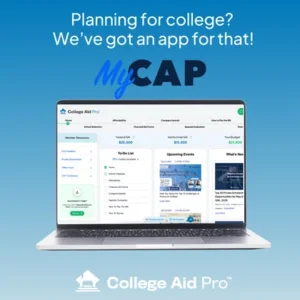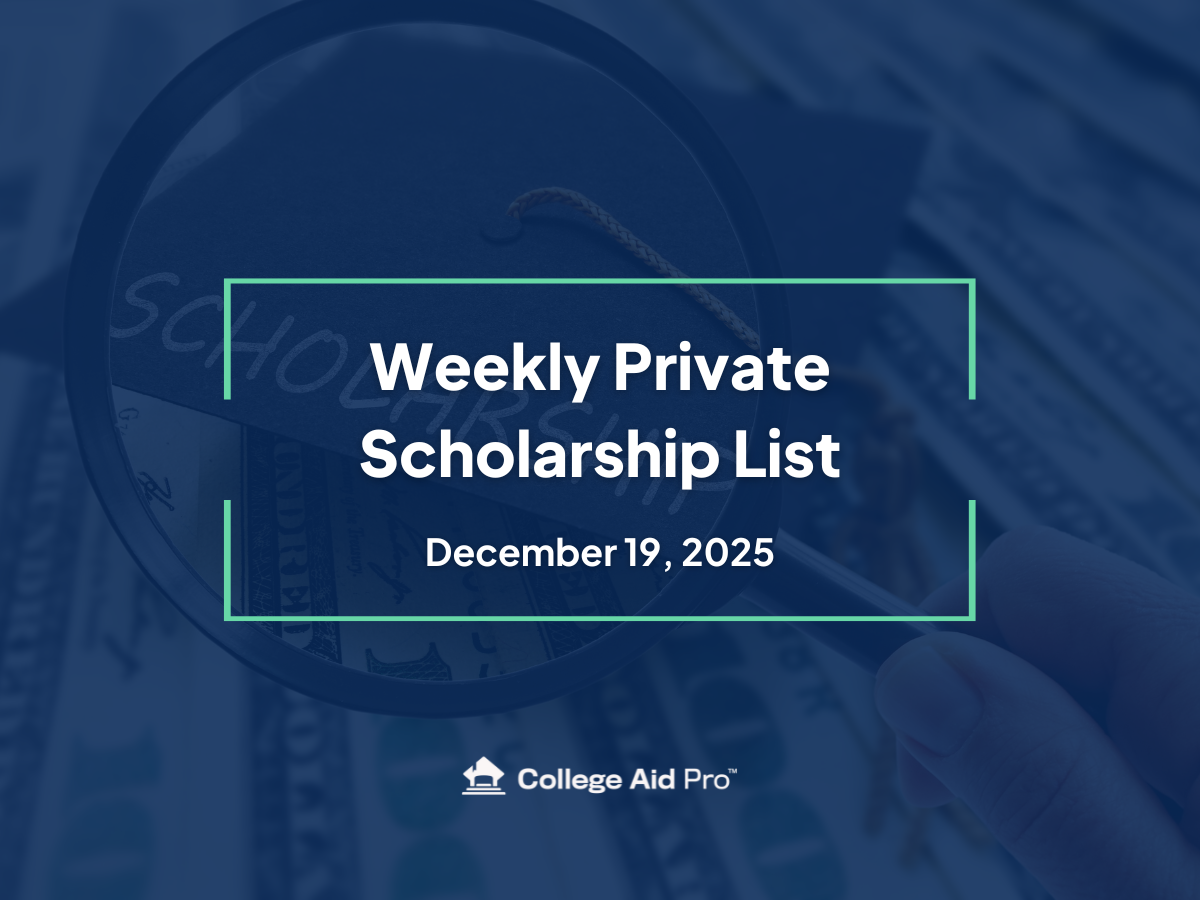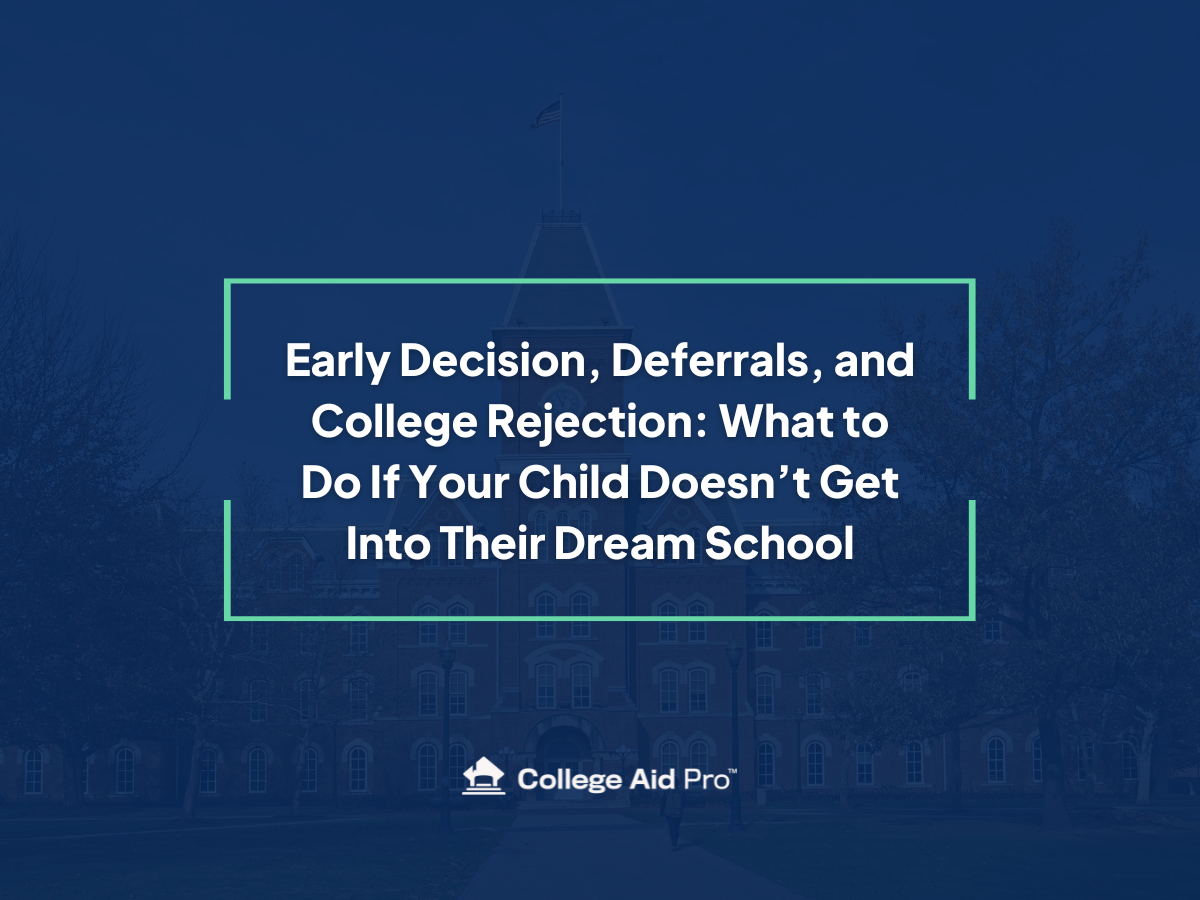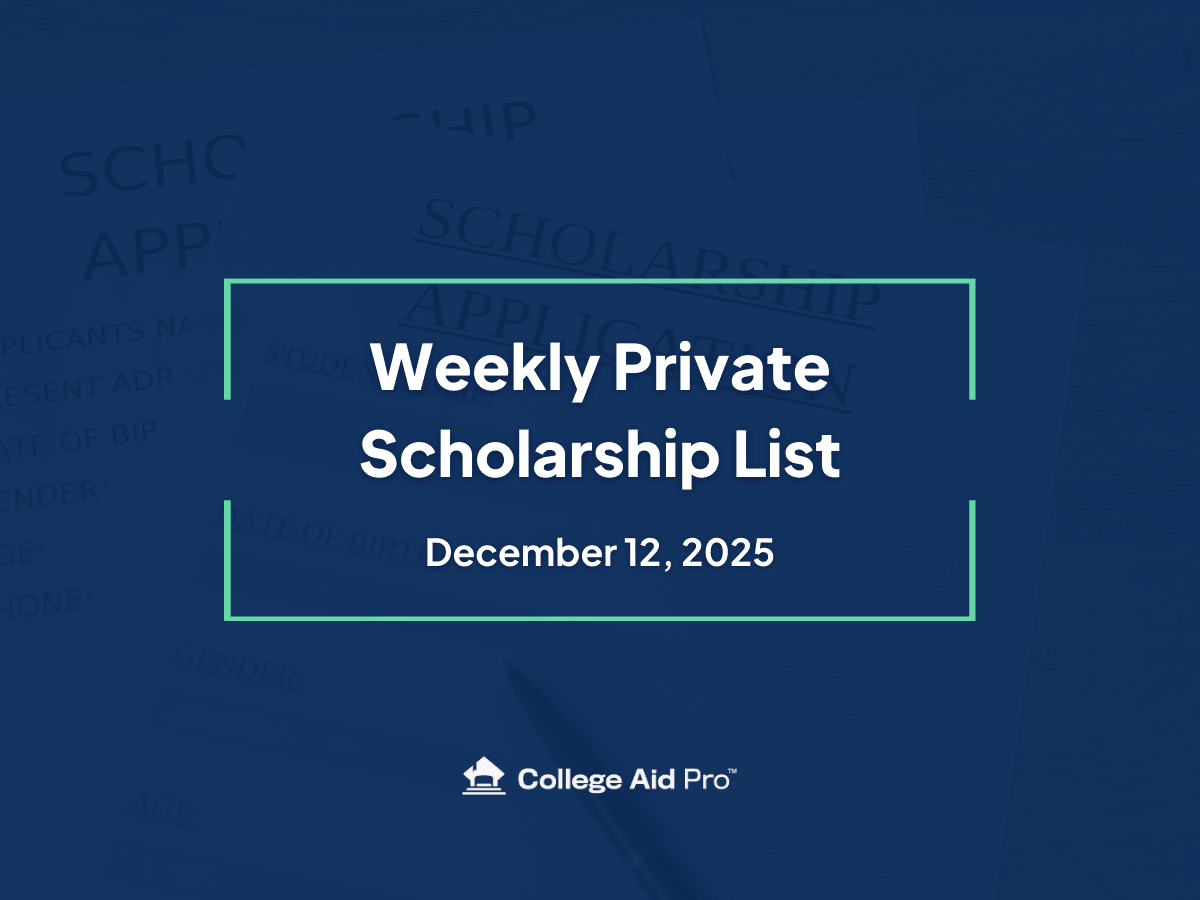 How to Pay for College: A Complete 4-Year Planning Guide
How to Pay for College: A Complete 4-Year Planning Guide
Congrats! Your student has been accepted to college. 🎉 Celebrate their accomplishments—but don’t forget to plan how to pay for college before that first freshman bill arrives. The earlier you start, the more time you have to strategize and avoid financial surprises. Ideally, families start estimating costs during junior year.
This guide will walk you through creating a multi-year plan to cover tuition, room, board, and other expenses using scholarships, savings, loans, and tax benefits.
Step 1: Estimate Total College Costs
Start with the Financial Award Letter from the college. Use it to calculate the cost for the first year and estimate years 2–4. Keep in mind:
-
Costs typically increase 3–5% per year
-
Need-based aid may be recalculated annually, while merit aid often applies for all four years
-
Unsure which awards are annual versus renewable? Ask the financial aid office
With a clear cost estimate, you can start building a plan using all available funding sources.
Step 2: Identify Your Funding Sources
Most families fund college in layers—using multiple sources to cover total costs. Consider these key options:
1. Scholarships, Grants, and Tuition Reductions
-
Free money is best money. Apply and track merit scholarships, Pell Grants, and institutional need-based aid.
-
Include state scholarships and tuition reciprocity agreements if attending out-of-state colleges.
2. 529 Savings Plans
-
Use funds for eligible expenses before relying on other sources.
-
Grandparent-owned 529 accounts can now be used more flexibly without affecting FAFSA EFC calculations.
-
Coordinate withdrawals with FAFSA and CSS Profile schools if necessary.
3. Student Savings and Earnings
-
Student contributions can reduce your Student Aid Index (SAI)…formerly known as Expected Family Contribution (EFC).
-
Consider savings and part-time work income during college.
4. Parent Savings
-
Use after 529 funds are depleted.
-
Helps reduce EFC but typically less effective than student funds.
5. Grandparent Contributions
-
Use strategically in later years to minimize impact on EFC.
-
Still subject to FAFSA and CSS Profile considerations.
6. Ongoing Contributions & Cash Flow
-
Include recurring monthly contributions to 529 plans or savings accounts.
-
Factor in state tax deductions for continued contributions while your student is in college.
7. Tax Credits
-
American Opportunity Tax Credit (AOTC): Up to $2,500 per year per student (max $10,000 over 4 years)
-
Lifetime Learning Credit (LLC): Up to $2,000/year, if AOTC isn’t available
8. Student Loans
-
Prioritize federal student loans before considering private loans.
-
Track yearly borrowing limits:
-
Year 1: $5,500
-
Year 2: $6,500
-
Year 3: $7,500
-
Year 4: $7,500
-
9. Parent Loans
-
Consider Parent PLUS Loans, private loans, or home equity options
-
Decide strategically based on interest rates, repayment flexibility, and overall family finances
10. Employer Educational Assistance
-
Some employers provide up to $5,250/year in tax-free education benefits.
11. Education Savings Bonds
-
Can be used tax-free if income limits and qualified expenses are met
12. Penalty-Free IRA Distributions
-
Roth IRA contributions can be withdrawn tax- and penalty-free
-
Other IRAs may qualify for penalty-free withdrawals for qualified education expenses
Step 3: Let’s Put It All Together

So, let’s look at a fictitious example.
Jayden has been accepted to Higher Ed University with a cost of $50,000 for his freshman year. During a conversation with the Financial Aid Department, he learned that the cost usually goes up by about 5% per year, so he has increased the cost by that amount for years 2-4.
Jayden was offered $15,000 per year in merit aid by the Department of Admissions and received need-based financial aid of $4,000, which he expects to qualify for in years 2-4 as well. He was also fortunate enough to win a renewable private scholarship that was advertised on his high school’s guidance page.
He knows that he will not be able to cover all four years of school without student loans, so he has included a plan to use the maximum amount of federal student loans available each year.
Jayden has saved up $2,000 to help him pay for college costs, but that has a bigger impact on his EFC than 529 savings his parents have for him, so he is going to go ahead and use that $2,000 in year 1. He is also planning to work as much as possible and expects to be able to contribute about $2,000/year from his income toward the cost of college.
Jayden’s parents have been paying a lot for groceries to feed him as well as sports clubs he is a part of. When those expenses go away, they think they can use those funds to contribute an additional $4,500 per year to help pay the college bill. They plan to proactively put the money in the 529 each month so they can continue getting a state tax deduction for the money they contribute to that account.
The money they currently have saved in the 529 increases their EFC each year, so they want to use that money to fully fund each school year until it is gone. Jayden’s grandparents haven’t saved anything for him, but if they had, he would use his parent’s 529 first and then start using the grandparents’ 529 since that is better for his EFC.
Following this strategy, Jayden is showing a gap in year 4 of about $20,500. He is trying to decide how to fill that gap.
One idea is to apply for as many private scholarships as he can find. Whatever he can not cover will have to be borrowed. Even if he has to borrow the full $20,500 in private student loans, he will still only have a student loan balance of about $48,000, which is a little less than he expects to earn in his first year after college as a nurse.
Though it will hamper his ability to start saving to buy a new car after college, he feels like the trade off is worth it to complete his education.
| Year 1 | Year 2 | Year 3 | Year 4 | |
| Cost | ||||
| Tuition | $35,000 | $36,750 | $38,588 | $40,517 |
| Room and Board | $15,000 | $15,750 | $16,538 | $17,364 |
| Total | $50,000 | $52,500 | $55,125 | $57,881 |
| How To Pay | ||||
| Merit Aid (tax free) | $15,000 | $15,000 | $15,000 | $15,000 |
| Need-based Aid | $4,000 | $4,000 | $4,000 | $4,000 |
| Private Scholarship (Renewable) | $1,000 | $1,000 | $1,000 | $1,000 |
| Student Loan | $5,500 | $6,500 | $7,500 | $7,500 |
| Student Savings | $2,000 | 0 | 0 | 0 |
| 529 | $16,000 | $19,500 | $21,125 | $3,375 |
| Parent On-Going Contribution | $4,500 | $4,500 | $4,500 | $4,500 |
| Student Employment | $2,000 | $2,000 | $2,000 | $2,000 |
| Gap | $0 | $0 | $0 | $20,506 |
| Total | $50,000 | $52,500 | $55,125 | $57,881 |
Your situation is probably very different from Jayden’s, so go ahead and reach out to an expert through your myCAP account for help putting together your family’s plan to pay for all four years of your college bill. Then you can rest easy, or more likely, start stocking up on dorm room necessities!
 Step 4: Use MyCAP to Simplify Planning
Step 4: Use MyCAP to Simplify Planning
MyCAP makes it easy to create a complete 4-year college funding plan:
-
Estimate costs: Enter award letters and projected expenses
-
Track all sources: Scholarships, savings, loans, and tax benefits in one place
-
Collaborate with family: Parents and students can work together securely
-
Adjust projections: Update as new awards, savings, or loans become available
With MyCAP, families can confidently plan how to pay for college without surprises.
Key Takeaways
-
Start early—ideally junior year—to estimate costs and plan funding
-
Use all available sources, including scholarships, savings, tax credits, and loans
-
Consider federal, private, and parent loans strategically
-
Track contributions carefully to minimize EFC impact
-
MyCAP helps you organize, calculate, and monitor your plan over all four years
TL;DR: Planning how to pay for college takes time, strategy, and organization. Estimate costs, layer scholarships, savings, and loans, and use MyCAP to create a clear 4-year plan



